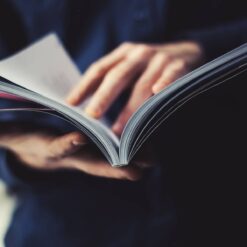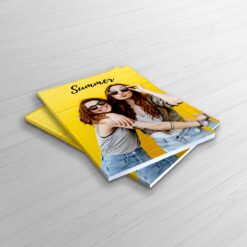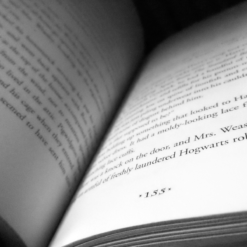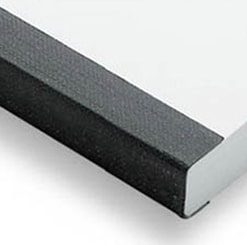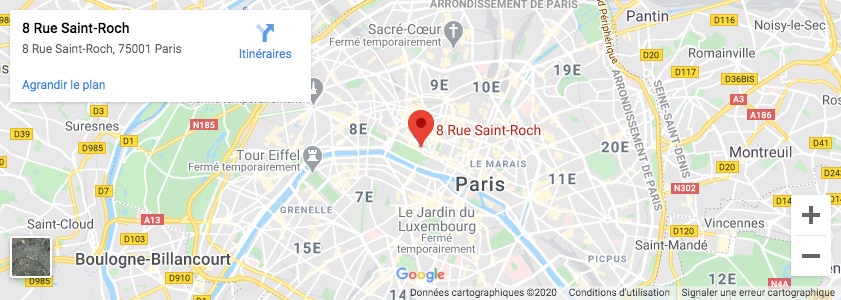- Notre imprimerie est fermée jusqu'au 7 juillet ☀️ Attention aux délais de vos commandes. ☀️ Les commandes en lignes sont temporairement désactivées
- Notre imprimerie est fermée jusqu'au 7 juillet ☀️ Attention aux délais de vos commandes. ☀️ Les commandes en lignes sont temporairement désactivées
- Call us 01 42 61 00 33
Monday to Friday 9:00 - 18:00 IMMEDIATE
CUSTOMISED QUOTERETRAIT EXPRESS
& LIVRAISON J+1-
-
- All
products - Cards
- Brochure
Files - Advertising
- Printing
- Office automation
- Adhesives
- Signage
- Themes
- Printing
Express in 4H
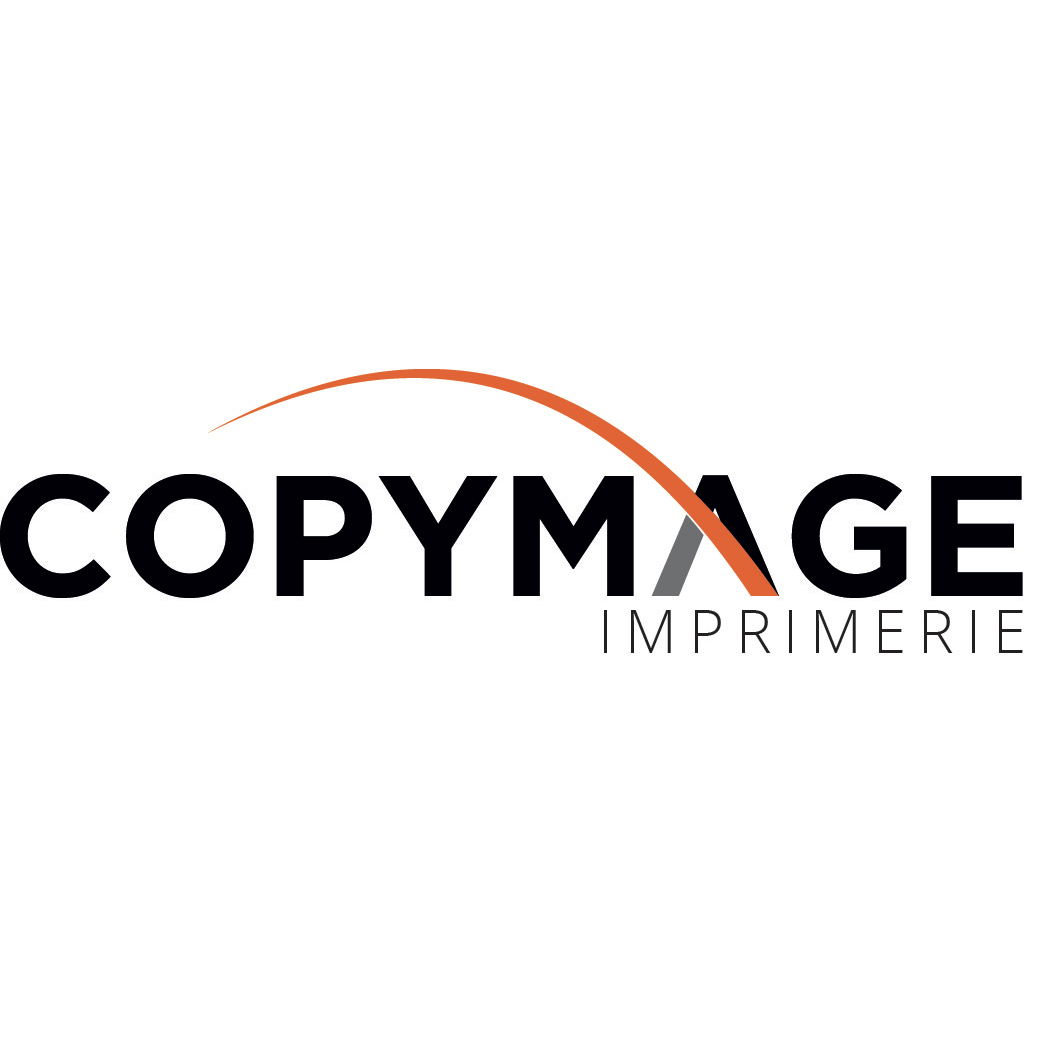

(from 40€ HT)
Depending on the quantity
Personalized help and advice
Professionals and individuals
The 2 main media in perfect binding
There are three main methods of binding:
- The stapled bindingmethod
- The spiral bindingmethod
- The glued square back binding method
While all three methods are effective, they are not all suitable for making the same materials.
Let's take a look at the glue-stitched binding method, which offers both a very professional and elegant appearance and great durability. Let's take a look at what it's all about, before we look at the two projects for which perfect binding is particularly appropriate: catalogues and university theses.
All products in the range Back to Back Binding
Show all 5 results
What is perfect binding?
Glued square back binding is the binding technique that most closely resembles commercial books. It consists of binding the pages of a document by impregnating them with PUR (reactive polyurethane) glue and then affixing the cover. The result is a book with a square edge.
There are three main advantages to glue binding:
- It is ideal for books with a large number of pages, such as doctoral theses. At Copymage, we recommend using a glued square back binding from 40 double-sided pages, i.e. 20 sheets. The maximum thickness should not exceed 6.5 cm.
- This method also has the advantage of being very durable. A catalogue with a glued square back binding can be opened and leafed through many times without the inside pages coming loose.
- Finally, the glued square back binding offers a very clean, professional look. By choosing this binding method for your novel, your book of poems or your family history, you will obtain a book of a quality equivalent to that found in the shops.
Using glued square back binding to produce a catalogue
The glued square back binding is very suitable for the production of a sales catalogue. It gives it a luxurious look that highlights the products presented in it. Many finishes allow you to create a catalogue that reflects your company's image: size, weight and type of paper, lamination of the cover, etc.
At Copymage, we suggest that you use a semi-rigid 350g coated paper for the cover. This paper weight offers both a good hold and optimal protection for your catalogue, which can be handled without damage. This paper is available in matt or glossy. In both cases, it will convey a high-end image of the products offered and of your company.
Using the glued square back binding to finalise your doctoral thesis
The glued square back binding is also the preferred method of binding when printing your thesis. university thesis. The two major advantages of this technique are :
- the fact that it is suitable for a large number of pages. The glued square back binding supports documents with an edge thickness of 6.5 cm - the sheets used for printing are themselves 0.1 mm thick, so you can imagine the maximum number of pages!
- theprofessional and respectable appearance that a perfect bound book provides. When you send copies of your thesis to your jury members, you can be sure that they will appreciate having such a serious work in their hands, both in terms of content and form.
Frequently asked questions about perfect binding
How to prepare your file for a glued square back binding?
You have finished writing your thesis, you have done the hardest part! To help you with the printing and binding of your academic work, we offer you some technical advice that will allow you to send us your files in the best conditions:
- Copymage accepts a wide range of file types for perfect binding. We recommend that you send us your work in PDF format. However, you can also send us Microsoft Office (.doc, .pub, .ppt), Adobe (.psd, .indd, .ai), JPEG, PNG, etc.
- Image resolution: we advise you to check that the image resolution is 300 dpi.
- In terms of colorimetry, we recommend that you choose the CMYK mode (or four-colour printing) while keeping in mind that some colours may vary between the screen display and the printing of your documents. If colour is an important issue for your thesis in perfect binding, do not hesitate to alert us beforehand so that we can propose adequate solutions during the proofing.
- Provide a safe area on your document. We recommend that you include a punch-out area and margins so that members of your jury can annotate it as they read.
- Concerning the typography, the minimum font size must be at least 10 points (in compliance with the standards and conditions required by your doctoral school). Furthermore, if you use Illustrator or InDesign files, remember to vectorise the fonts ("vectorise" command in the menu).
If you have any doubts, don't hesitate to contact us. At Copymage, we check all your files for free before printing!
How do you calculate the thickness of the edge of the glued square back?
The edge of your document is an important issue when you opt for a glued square-back binding. Since it is the same sheet that will cover your document, you must anticipate the size of the spine when designing the document - and if you wish, use this area to display the title of the catalogue, its publication date, etc.
To calculate the edge thickness of your document in mm, simply multiply the number of sheets (not the number of pages) by the thickness of the paper used, knowing that :
- 100g sheets of paper are 0.1 mm thick,
- 115g sheets of paper are 0.1 mm thick,
- 135g sheets of paper are 0.12 mm thick.
For example, you want to use a glued square-back binding for a catalogue that has 200 double-sided pages, i.e. 100 sheets. You have chosen a 115g paper with a thickness of 0.1 mm.
- 100 sheets x 0.1 mm = 10mm
The edge thickness of your catalogue is therefore 10 mm.
However, the minimum size of the spine in a perfect bound book is 8 mm to be able to print a text on it. So you can put your company name on it and maybe say "Spring 2022 collection"?
What is PUR glue?
Glue-down binding is also known as PUR glue-down binding, referring to the type of glue used. This PUR glue , which stands for reactive polyurethane, has characteristics in terms of strength and flexibility that guarantee the strength of glued square back bindings. The PUR glue that impregnates the sheets and the cover of your document will allow it to open completely without the inner sheets coming loose.
But these technical qualities offer a secondary benefit: since it is more effective than other types of glue, it is not necessary to use as much gl ue for glue-stitched bindings. By using PUR glue for our glued square back bindings, we make both an aesthetic gesture by offering better quality binding and an ecological gestureby saving about one third of the glue used.
Our rates
The best prices on the market
The quality
We are demanding and attentive to your satisfaction
Our deadlines
Tight deadlines thanks to our continuous production system
Imprim'vert label
We are careful about our footprint and waste management. We have obtained the Imprim'vert label.
Help & Advice
Our experts are here to help you.
HELP & ADVICE
Our experts are here to help you. Do not hesitate to contact them.
Adresse
8 rue Saint Roch 75001 Paris
Metro
Line 1 Tuileries
Line 14: Pyramides Line 14 : Pyramids
Bus
Lines: 21, 27, 68, 72, 81










